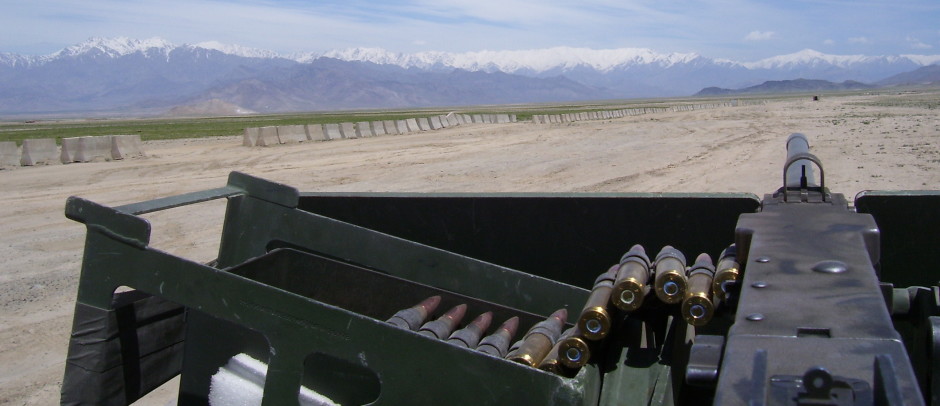People who are against hunting are misguided and misinformed. For the record, I’m not a hunter; never have been, never will be. But I support those that do and understand how they fit into balancing the system.
Everybody loves animals. Who doesn’t love fluffy little bunnies and baby deer. The animated film Bambi has brought a tear to many an eye. So if you love animals, you surely would be against tracking them down and brutally shooting them with gun or crossbow. But people that feel this way are condemning these animals to the more slow and painful death of starvation.
When we came to this country over 500 years ago, nature was in balance. For every animal, there was a predator that kept the system in equilibrium. Bears, mountain lions, wolves, coyotes, bobcats, etc. kept the size of deer herds in check. There was enough food for everyone whether that food was plants or other animals.
But over time, the predators that were also a danger to man were killed off or pushed back into the remotest regions, far from man’s domain. The animals that were not a threat to man adapted and continued to live nearby. This is best represented by the local deer populations. But while their environment was now safer without the predators, this lack of predators actually sowed the seeds of two new forms of death far worse than death by mountain lion: starvation and death by automobile.
Without predators to thin the herd, overpopulation occurs. The food supply won’t support the size of the herd resulting in slow starvation. Starvation weakens the animals making them more susceptible to disease. With no predators to remove the weak, diseased animals, the disease spreads to healthy animals.
I’ve seen this happen locally. A nearby, privately owned nature preserve banned deer hunting on their property. Ten years later, they had to hire professional hunters to come in and thin the herd. The starving, diseased, weakened, emasculated animals were disposed of in a landfill. Their life and death served no purpose.
With overpopulation and dwindling food supplies, deer travel farther to find food. This incurs crossing many roads, some major, some minor. Last year over 1,000,000 deer were killed or maimed from being struck by a car. They die on the side of the road or struggle into the woods to die a more lingering death, unable to forage for food, from starvation.
In addition to the one million deer killed by auto-strikes, approximately 200 people are killed and 10,000 are injured in these accidents. The cost of these accidents exceeds $1 billion.
Using numbers from State Natural Resource Departments, it shows approximately 6 million deer were killed during the legal hunting season in 2014. If these 6 million deer were still roaming the earth, how would that affect their food supply? Depending on the source you use, deer population in the country is estimated to be between 20 and 30 million. In areas lacking natural predators and hunting, deer populations can double in two to three years.
So I’m wondering how all of these people, holding up cardboard signs against hunting would handle the overpopulation and eventual starvation caused by banning hunting? Would they support herd thinning by professional hunters at taxpayer expense? Or would they support re-introduction of predators (wolves, mountain lions) into their neighborhoods to naturally thin the herds at the expense of homeowner’s safety? Maybe a government welfare program to feed the overabundance of deer. How about a deer birth control or abortion program to reduce the number of deer born each year.
Or we can continue to use the legal hunting system now in place. It works, it has controls and provides many benefits; some I’m sure these “hunting-banners” are probably not aware of.
Contrary to popular belief, most deer are hunted for their meat. It provides an inexpensive source of meat/protein to families. This activity serves the public better than the deer left to die on the side of the road after being hit by a car.
But the biggest benefit of hunting is the amount of money hunters put into programs that improve wildlife habitat. The Federal Aid in Wildlife Restoration Act of 1937, also known as the Pittman–Robertson Act for its sponsors, placed an 11% excise tax on firearms, ammunition, archery and hunting equipment. Instead of the money going into the U.S. Treasury, the money is kept separate. It is given to the Secretary of the Interior to distribute to the States. None of the money may be used by anyone other than the State’s Fish and Game Department. Acceptable uses include research, surveys, management of wildlife and/or habitat and acquisition or lease of land. This piece of legislation has been credited with bringing back from the edge of extinction many birds and animals.
More Info on Pittman/Robertson Act
The National Shooting Sports Foundation tracks collection and use of this excise tax. The above page shows that that in just 2013, $522.6 million was collected and distributed to States for wildlife management. It is estimated that since 1939, $8 billion has been collected and returned to the States. Many projects require the State to provide matching funds which pushes the total amount dedicated to wildlife management at over $10 billion.
I wonder how the “hunting-banners” plan on replacing that $522.6 million a year hunters generate if hunting is banned? Or maybe they’re going to let the wildlife fend for itself.


